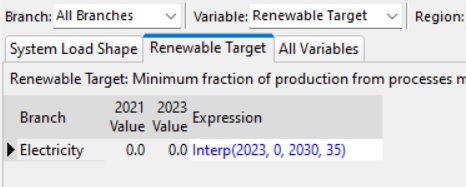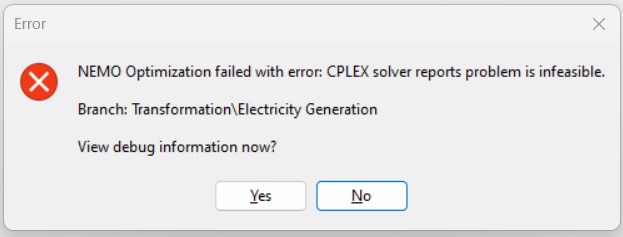Topic: Optimization: infeasible solution Subscribe | Previous | Next
Hi LEAP team,
I am working on an
optimization case study using LEAP. I have set the constraint (renewable
target), say reaching 35% RE share by 2030. However, LEAP told me that
there is no feasible solution. I am pretty sure all the data are
correctly placed within LEAP. My questions are:
- If there is no feasible solution, can I conclude that the region I'm working on will not be able to meet the target by 2030?
- Assuming the answer to question no.1 is yes, what is the best way for me to calculate when (what year) the region will meet the renewable target? I am afraid I don't want to use a trial-and-error method by changing the year in the renewable target box and then re-running the optimization again and again. :(
Thanks in advance.
Best regards,
Pinto
Hi, Pinto -
If your model works when you remove the renewable target but is infeasible when the target is added, you can conclude the region can't meet the target given your other assumptions (resource potential, capacity limits, etc.). In other words, the answer to question 1 is 'yes' given the other assumptions in the model.
Without introducing custom constraints into NEMO, I think answering question 2 requires a bit of trial and error. I'd try a run with the target applied in much later year (e.g., 2050); if that works, split the difference between 2030 and the later year, and try again. Keep proceeding in that fashion until you find the last feasible year.
Alternatively, you could create a temporary pollutant and associate it with all non-renewable processes; assign a high cost to emissions of the pollutant; and run the model without a renewable target. This would induce the model to use as much renewable power as possible and provide a reasonable estimate of when the target could be attained.
Thanks,
Jason
Hi Pinto
You may get infeasible solution in the case of optimization if for instance you fix some parameters for emissions constraint or renewables such as maximum availability for rennewables. I had this issue which I sorted out by reviewing some parameters. Hope this may help.






